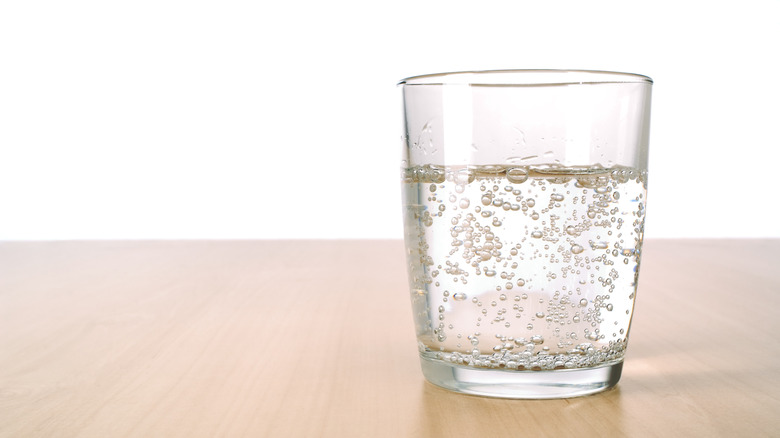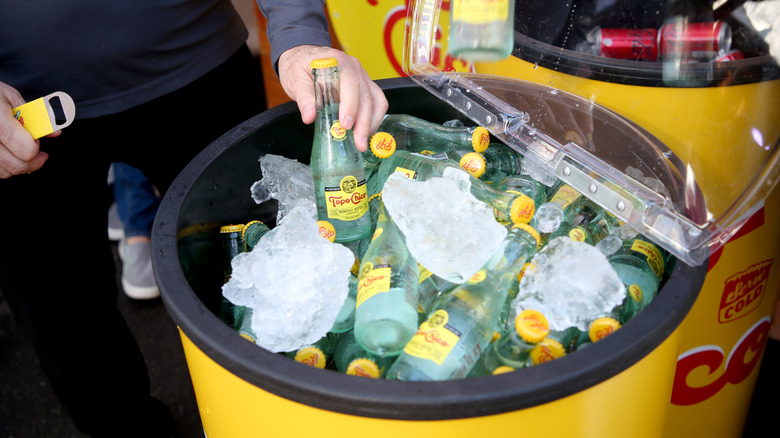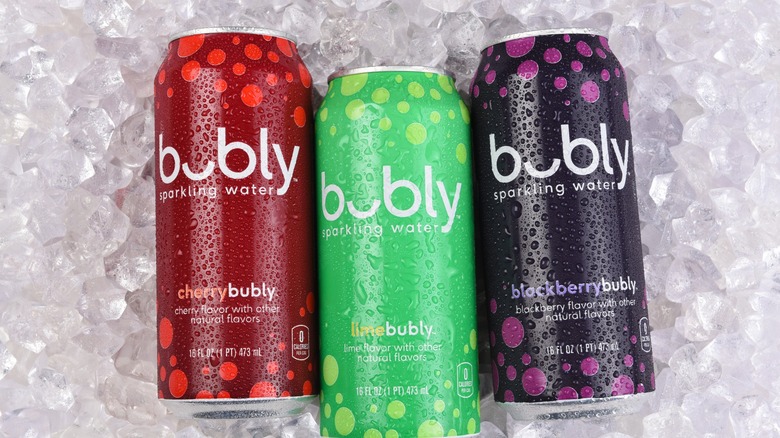Your Favorite Sparkling Water May Contain 'Forever Chemicals'
The carbonated kick of sparkling water may be satisfying, but there may be a harmful side to the beverage. According to a 2020 study from Consumer Reports, several leading brands of carbonated water had alarmingly high levels of a chemical called PFAS. Also known as "forever chemicals" due to their inability to degrade in the environment or the human body, these synthetic compounds have been used in the industrial manufacturing of household products since the 1940s but have been linked to health issues like thyroid dysfunction, liver disease, and kidney and testicular cancer, per a 2020 study in Frontiers in Endocrinology.
The different types of PFAS are many and varied, and their use is widespread due to their ability to resist water, grease, and other substances that can stain and stick. They are often found in cleaning fluids, shampoos, sunscreen, makeup, rain jackets, and many other products that deflect moisture and oils. In kitchens and restaurants, forever chemicals are present in nonstick cookware and takeout food wrappers. Their prevalence over the decades, combined with the powerful carbon-fluorine bonds that prevent them from breaking down, has unfortunately resulted in contamination of water sources, soil, and the air we breathe.
What carbonated water has forever chemicals?
Consumer Reports noted that at least seven brands of carbonated water commonly sold in supermarkets have PFAS that are above 1 part per trillion. Although this falls well below the EPA's guidelines of 70 ppt, scientists who work for environmental NGOs often claim that these are outdated limits since research started in the 1990s and 1 ppt should be the newer standard.
Topo Chico, owned by Coca-Cola, has the highest amount of forever chemicals of all the brands in the study group, ranking in at 9.76 ppt. Polar also contains a notably high level of PFAs at 6.41 ppt, followed by Bubly at 2.24 ppt. Poland Spring (1.66 ppt), Canada Dry (1.24), La Croix (1.16), and Perrier (1.10) should also be eyed with caution for their PFA additives. Brands with PFA levels below 1 ppt are Schweppes (0.58), Dasani (0.37), Sanpellegrino (0.31), and Spindrift (0.19), although the only brand with no PFAS detected at all was Sparkling Ice. Most of the companies pushed back against the claims, although Topo Chico stated that it would "continue to make improvements to prepare for more stringent standards in the future."
What is the government doing to regulate PFAS?
Currently, there are no official federal regulations on PFAS, only voluntary guidelines. As a result, states have mandated their own individual regulation standards on drinking water supplies and manufacturing. New Jersey, for example, has set a maximum contaminant level of 14 ppt for PFOA and 13 ppt for PFOS, two separate types of PFAS. In a historic PFA decision, Maine has banned the sale of all products "containing intentionally added PFAs" starting in January 2030; the ban on fabrics containing PFAS already started this year.
The EPA is currently waiting for approval on legislation to regulate six types of PFA chemicals under the National Primary Drinking Water Regulation (NPDWR). Although the process was started in March 2023, the EPA is hoping to finalize the legislation by the end of the year. PFAS may be higher in carbonated water because of the carbonation process, but the unfortunate truth is that forever chemicals have seeped into drinking sources, including tap water. Luckily, the issue is getting much more public attention than it previously has, and research and legislation about forever chemicals seem to be moving forward.



